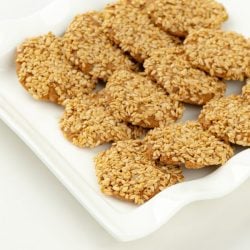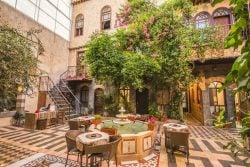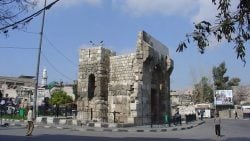A Journey Inside Traditional Damascene Houses
The Damascene house is truly unique, boasting a cultural charm that you can only find in the heart of Damascus. Let’s explore the most remarkable aspects of these traditional homes.
Sections of Old Damascene houses

The Damascene house has three wings:
1. Salamlik: The outer reception wing, designated for hosting guests, especially men.
2. Haramlik: The living and family wing, reserved for women.
3. Khadamlik: The wing designated for the servants, containing their quarters and essential services.
Al-Zuqaq and Al-Khoukha
As you enter the Damascene house, the first thing you encounter is the Bab Al-Zuqaq (the large door), which opens to allow the passage of large items. Al-Khoukha is the small door within the larger one, allowing just one person to enter at a time.
Al-Dihliz
After entering through the door, you walk through the dihliz. It’s a narrow corridor that leads to the main courtyard of the house. You’ll often hear visitors say “Ya Allah, Ya Allah” to politely alert the household of their arrival.
Ard Al-Diyar (Sahn Al-Dar)
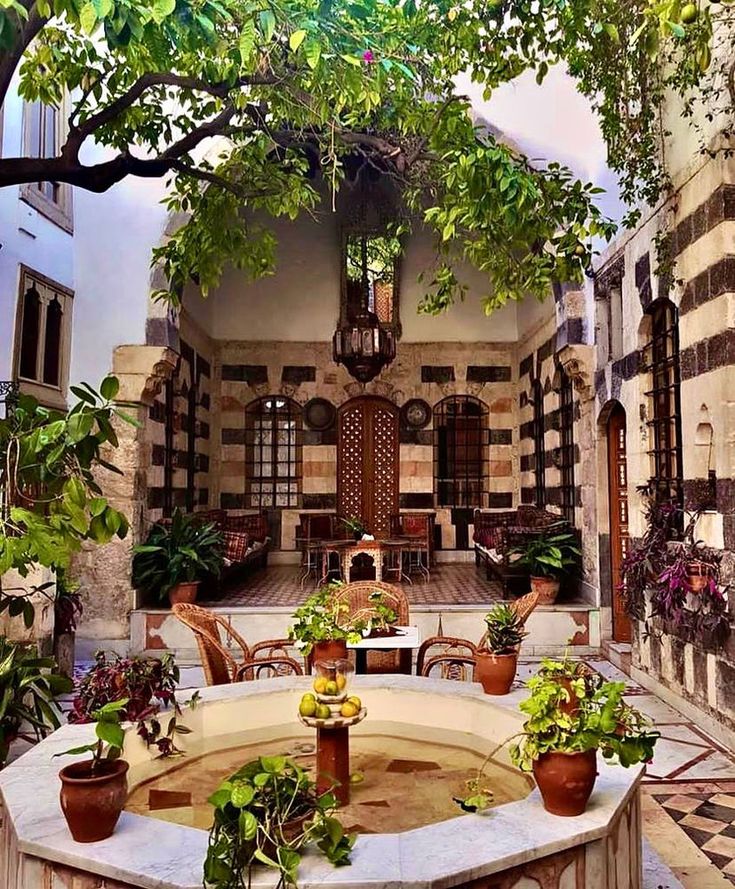
A large, open courtyard that brings an outdoor feel to the indoor space. These interior courtyards are outdoor-inspired inner spaces that often feature an intricately designed fountain surrounded by jasmine, orange, and lemon trees. This courtyard is the heart and soul of the Damascene house.
Al-Barrani (Diwaniya)
This is the room located near the entrance, also known as the Madafa. It’s typically reserved for resolving disputes or hosting close guests.
Al-Iwan
Al-Iwan is a slightly elevated area overlooking the central courtyard, directly open to the outdoors. It features an ornate arch called the Taj Al-Iwan. This is where the family typically sits with guests, especially for quick, informal visits.
Al-Jawwani (The Hall)

This is the large, intricately decorated interior room used for receiving important guests. It features an ornate ceiling and a small fountain called the Fustiya inside.
Al-Mandaloun
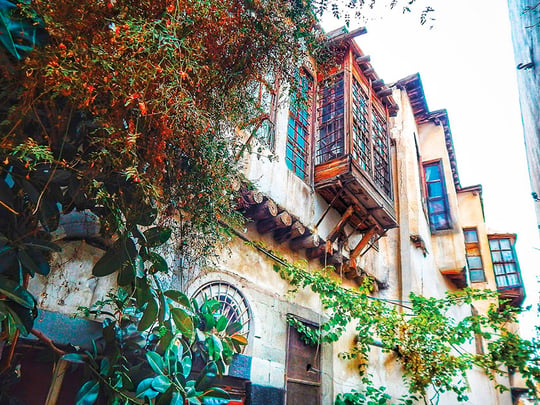
The mandaloun is a small window that opens onto the wall separating the house from the neighbor’s home. Through this window, the lady of the house communicates with her neighbor and they exchange food, a practice known as “Al-Sikba.”
Al-Musharifah
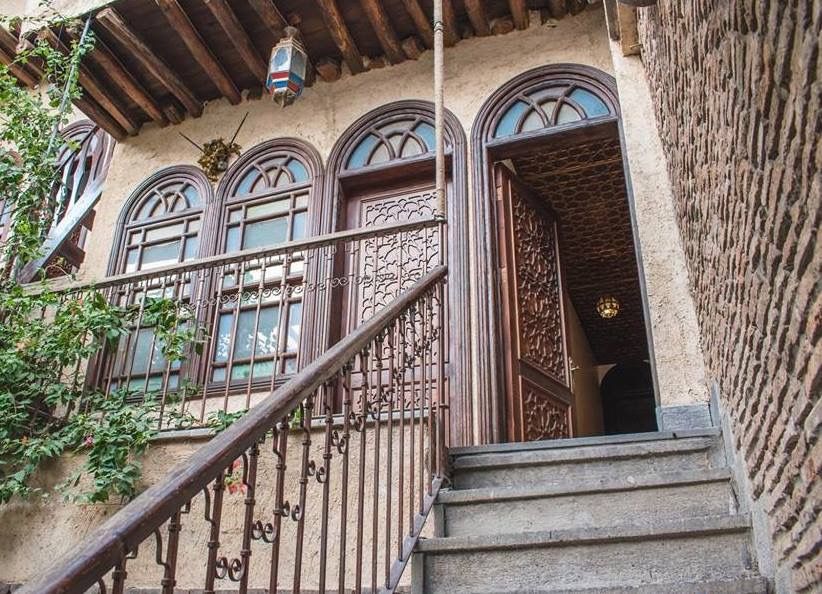
The musharifah is a small platform between the staircase and the bedrooms on the upper floor. Here, the lady of the house hangs laundry to dry, often overlooking the courtyard below.
Al-Qabou
The qabou is the underground room. This space stores provisions, as its cool temperature helps preserve food for extended periods.
Al-Nasiyah and Al-Saqifah
The nasiyah refers to the smaller upper rooms, while the saqifah is the room above the kitchen, where firewood and items not needed on a daily basis are stored.
Furniture of Damascene Houses
Damascene houses feature unique furniture and tools, each with specific names. Some of them are quite old, and some of these terms are still in use today.
– Door Threshold or Bartoshet Al Bab: It is a concrete or marble piece placed on the edge of the door floor, protecting it and preserving the beauty of the entrance.
– The Dropper or Al Saqet: It is the key to the house door.
– The Saqqat: It is the knocker on the door of the house for alerting, and it is often in the shape of a ring or a human hand, made of iron. The door used to have two of them; one in the middle of the door for women and another one slightly higher and bigger for men.

– The Consulate (Konsol): An old Shami (Levantine) term, which refers to a wall mirror with an oval-shaped table, usually placed in the entrance of the house.

– Al-Sobia: The winter heater that warms the Damascene house, and it ignites either with wood or diesel.

– The Namliya: A wooden food storage cabinet, featuring windows made of metal mesh, allowing for food ventilation while preventing ants and flies.
– The Kanounah: A wall-mounted heater found in the large Arab kitchen, used for cooking by burning wood or charcoal.
– The Ta’qa: A small, high opening in the kitchen or bathroom for ventilation, helping to renew the air and prevent humidity.
More about Damascus houses:

History of the Establishment of Damascus Houses
Syrians constructed Damascus houses in their current style starting in 1036 AD. The oldest Damascene house belonged to the Umayyad Caliph Muawiyah bin Abi Sufyan and was called Dar al-Imara, or the Green Palace, named for its distinctive green dome.
Features of the Damascene House
The Damascene house harmonizes with the natue of the Levant. It provides comfort and coolness in the summer and warmth in the winter. Its design allows sunlight to enter from different facades according to the sun’s rotation, and the pond in the middle of the house acts as a natural air conditioner, cooling the atmosphere.
The Most Famous Damascus Houses
One of the most famous Damascene houses, Beit Khaled al-Azm in the Sarouja neighborhood, showcases an artistic masterpiece of Damascene decorations. Beit Asaad Pasha al-Azm has also been transformed into a museum of folk traditions. Other notable houses, such as Beit Sulaiman and Maktab Anbar, along with many luxurious homes, narrate the rich heritage of Damascus.
Damascene Houses and Tourism
Damascene Houses in Literature and Poetry
The poet Nizar Qabbani described Damascus houses with the most beautiful words, saying: “Do you know what it means for a person to live in a bottle of perfume? Our house was that bottle.” Here’s a video of Nizar Qabbani’s house:
The Damascene house is more than a house; it is an architectural masterpiece blending history, heritage, and the authentic Damascene spirit. Every corner tells a story, and each part holds memories of generations that passed through this place.
You might also like: Video: A Glimpse of the Al Fosol Al Arbaa House Today

